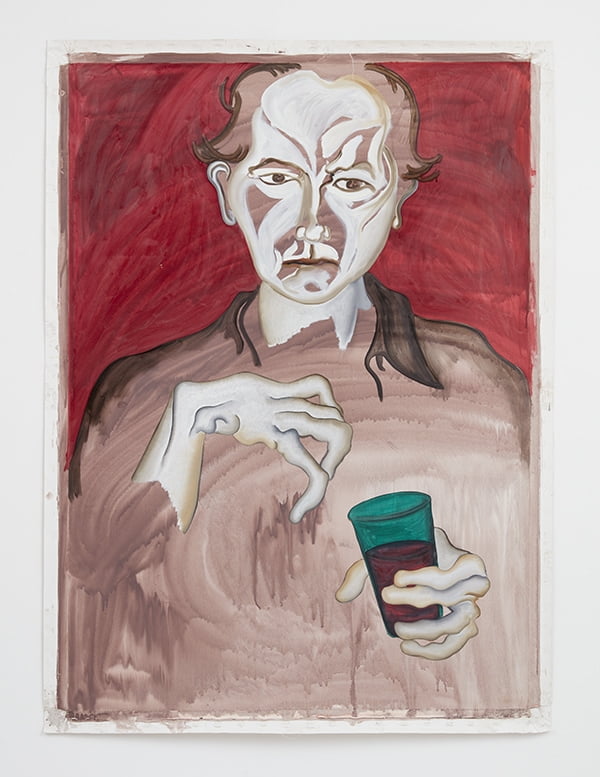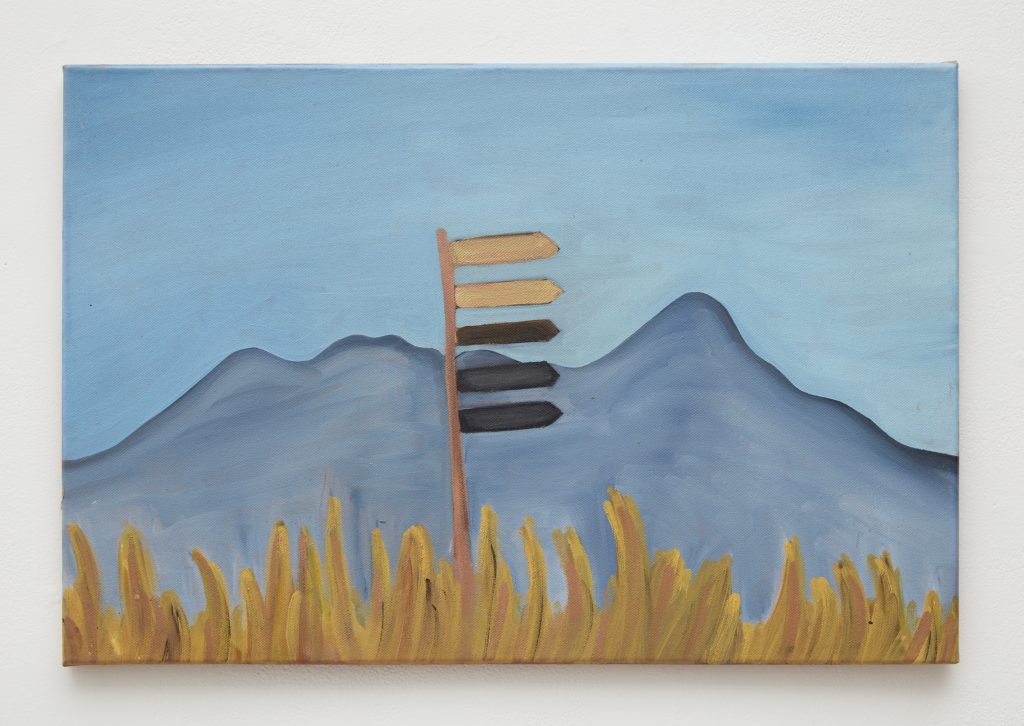There is a theatrical quality to Helen Oliver’s paintings, their scale and earthy palette recalling, in one glance, those eerily charmed circus or movie marquee posters of yesteryear. This feels especially true of her portraits, which loom large enough to engulf the viewer in the formal contortions of their sometimes nude subjects. Yet these works also feel intimate, the bodies they expressionistically depict—or aspects of them, an arm, a hand—being rendered with a painterly finesse that can contrast to the more gestural, mask-like evocations of her sitters’ faces. While some were painted on commission, most of the portraits are of the artist’s friends, and for each her subject sat for her, lending to the palpably personal sense of presence these works evoke.

Due no doubt to the staggered lines and optical distortions characterizing her renderings of certain subjects, Oliver’s work is sometimes compared, as she notes, to that of Egon Schiele. Yet while she admires his work, any influence it might have on her own isn’t conscious, she points out, adding that she feels most inspired by Giotto—“my idol,” Oliver calls him—and Renaissance masters including Masaccio, Bartolomeo Montagna, and Botticelli. The cryptic poise often characterizing these painters’ subjects registers in Oliver’s own portraits, whose subjects seem to hover in stately equidistance between tragic and comic antipodes. The lines and shapes in Oliver’s landscapes, meanwhile, can feel quaintly bumbling, affably eccentric, naively captivating somehow. Especially affecting is Road Signs (2017), in which a sweetly lumbering mountainscape is rendered in a wash of blue close in hue to the aquamarine of the painting’s sky. The gestural frankness with which its minimal features are depicted—firmament, mountains, grass, and sign—and the subtle variations of the work’s essentially dichromatic palette, contribute to the plaintive earnest of its effect. Pisa River (2017) is similarly stirring, evoking its features—a river lined with lights and swerving bumptiously toward us—with gestural élan, each brushstroke feeling essential to the work’s seemingly childlike allure.

Oliver describes her childhood in Savannah, Georgia as “very isolated.” Her father died when she was a little over a year old, and she grew up with her mother and brother, the East Village actor and playwright Edgar Oliver, for whose plays at La MaMa Helen would eventually paint backdrops. Throughout her childhood she watched her mother paint, though was never allowed to touch her paints. During the family’s travels north, “We practically lived at the National Gallery in Washington, DC, which my mother was obsessed with wandering through,” Oliver says.
The isolation of childhood appears to inform the gaze Oliver casts on the world. The gaze of a perennial outsider, it would seem, who found a home in something forbidden in her youth. A home that came to include other outsiders: “In New York I painted my friends, East Village performers, artists, drag queens, and all that…” She has lived in Italy since 2000, and there has increasingly painted landscapes due to “the dearth of people to paint.” Yet if these exhibit a de Chirico-esque desolation, they are also informed, like her portraits, with an endearing knowing, of the sort born of solitude, and of the ingenuousness required to embrace it.



